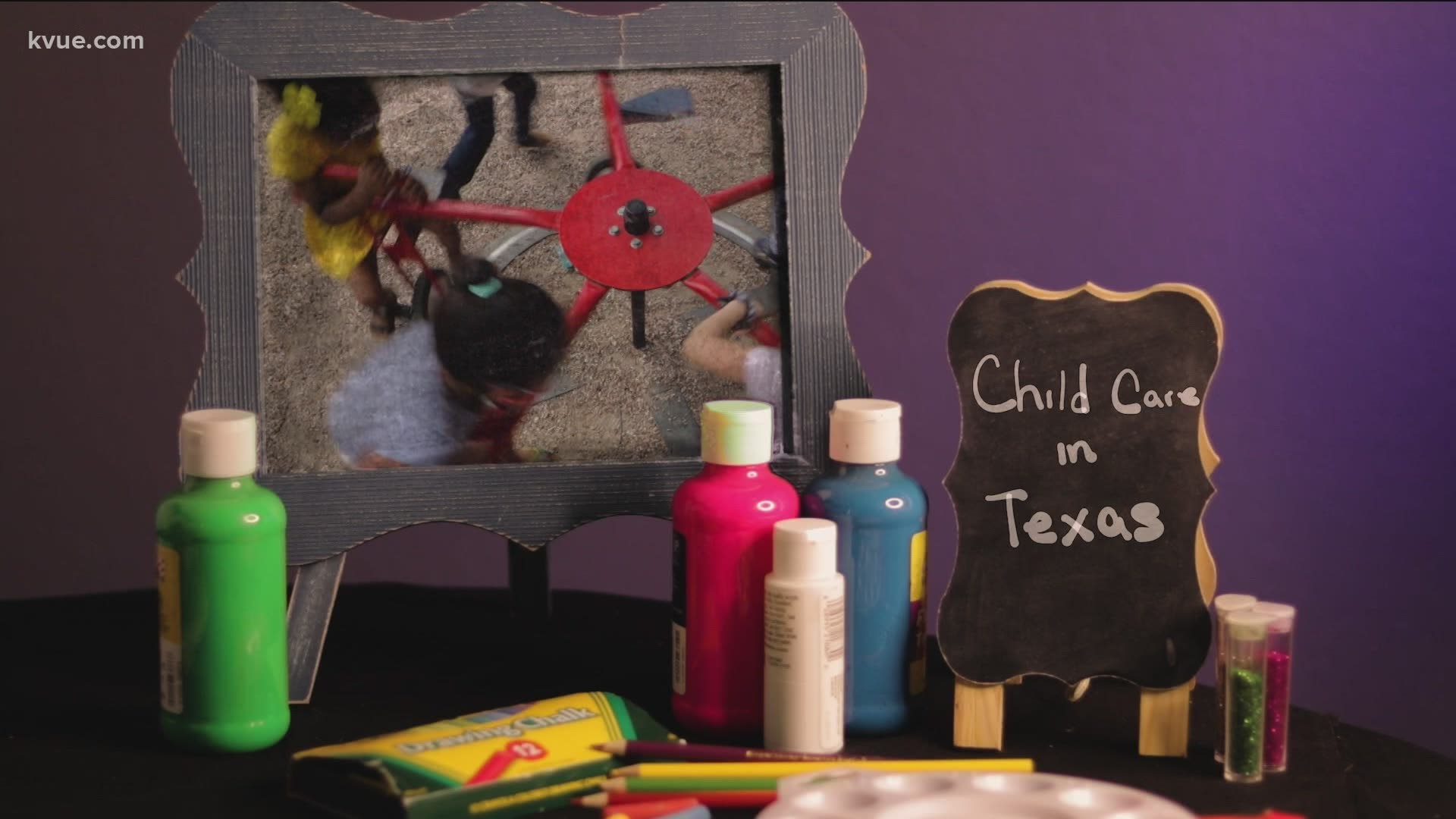AUSTIN, Texas — Texas hands out millions of dollars in child care subsidies, but most of that money does not come from the State.
It’s federal dollars with federal regulations.
“If we can't put the money into early childhood from a state and federal level to have high-quality child care, then people are just not going to be able to work,” said Administrator for Angels Care & Learning Center Chuck Cohn.
As a part of the Texas Rising Star program, tax dollars cover the bill for 85% of the children at Cohn’s center.
According to a spokesperson for the Texas Workforce Commission, this means Cohn's center has earned the state’s highest rating for child care and "offers quality care that exceeds the state’s Minimum Child Care Licensing Standards for director and staff qualifications and training, teacher-child interactions, and program administration, and indoor/outdoor learning environments."
The commission said these programs provide quality early education experiences that contribute to the early development of children. Texas Rising Star programs also have access to free resources for continuous quality improvements, such as professional development, coaching, curriculum and classroom materials.
“It's tough on families to find a high-quality center right now,” said Cohn. “A lot of people don't realize that the cost of child care for a family that doesn't get a subsidy is roughly equivalent to what it would cost to your child to go to the University of Texas for a bachelor's degree.”
An organization called United Way for Greater Austin studies child care in Central Texas and their records show 64 child care centers in Travis County closed during the pandemic.
“All of the centers were struggling and hurting during this pandemic,” said Director Child Care Contracts for Workforce Solutions Capital Area Nicole Robinson.
As of April, a third of those centers had still not reopened.
“We’re looking at creative ways to continue to provide those supports that were so desperately needed during the pandemic,” said Robinson.
Workforce Solutions Capital Area receives federal and state money through the Texas Workforce Commission. Workforce Solutions also establishes community partners, like the City of Austin and the recent contract with the City will extend child care assistance for essential workers and local grants also offer wage supplements for teachers.
However, Cohn said he has trouble hiring teachers.
Texas Labor Market Information shows the Austin area has some of the highest pay for child care teachers in the state. The average wage is $12 an hour.
“When I drive home from work every day and go past P. Terry's, they're offering a starting salary of $15 per hour. So that's who we're competing against, you know, the fast-food industry that pays more,” said Cohn.
The federal government earmarked nearly $6 billion COVID-19 relief money for Texas child care. Robinson’s team used some of their portion to subsidize more children's daycare fees. Thanks to this fund, Robinson said 600 children are off the waitlist and able to go to a center.
TWC data shows 167 children are still waiting to be placed in a center in the Austin area. Another 68 children are on a waitlist for areas outside the city, in the Workforce Solutions Rural Capital Area.
“We are always looking for ways to support the families and get them into care because we know that that's critical so that they can go to work, school or training,” said Robinson
Cohn said the State should also pitch in.
“This is an economic driver for the State. So, I think this needs to be a priority,” Cohn said.
Excluding COVID-19 relief money, records show $826.5 million came from the federal government to Texas to pay for child care in FY 2021. It’s nearly 12 times the amount the state will spend. The State will spend most of its money as a match to receive the federal dollars.
"Generally, TWC’s statewide initiatives are not focused on direct subsidies for children, they are focused on quality improvement activities. For example, TWC funds a statewide initiative that supports professional development opportunities for early childhood teachers and an initiative that supports business training for child care programs," a TWC spokesperson said.
Cohn said he doesn’t know what will happen after the COVID-19 relief money ends.
“We're going to see once all that money goes away within about two to three years that we're now back to the baseline funding. And that did not sustain us prior to COVID,” Cohn said.
“The child care services program subsidizes child care for low-income families, promoting long-term self-sufficiency by enabling parents to work or attend workforce training or education activities. It also educates parents about the availability of quality child care, which enhances children’s early learning. Additionally, the program provides supports to early learning programs working to improve the quality of child care services. To learn more about the impact of TWC’s child care program, see Child Care by the Numbers," a TWC spokesperson said.
In two years, the State can consider offering more money for subsidized child care. It will be up to lawmakers.
PEOPLE ARE ALSO READING:

